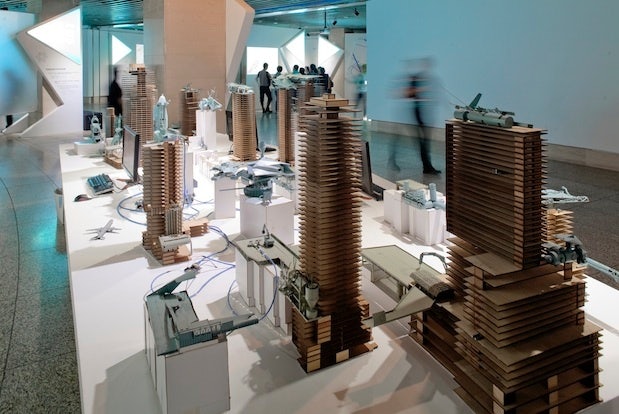
"Crisis in Parasite Paradise", at the Smart City 2013 exhibit for Beijing Design Week. (Beijing Design Week)
What if you threw a design festival, and no one came? The fourth edition of Beijing Design Week drew a number of exhibitors to locations throughout the city, but the number of attendees remained small.
BJDW suffered from a stunning lack of promotion. Run under the auspices of the Ministry of Education, the Ministry of Science and Technology, the Ministry of Culture and the Government of Beijing Municipality, with the heavy organizational and promotional lifting assigned to the Beijing Gehua Cultural Development Group and the Beijing Industrial Design Center, finding out information about what events were happening, and where, was a frustrating treasure hunt. Though the official BJDW website offers simple maps of the major locations with event times and titles—printed copies of which were available at Caochangdi, 751 D-Space and Dashilar—these appeared just days before BJDW began, and provided little to no information on what the events actually were.
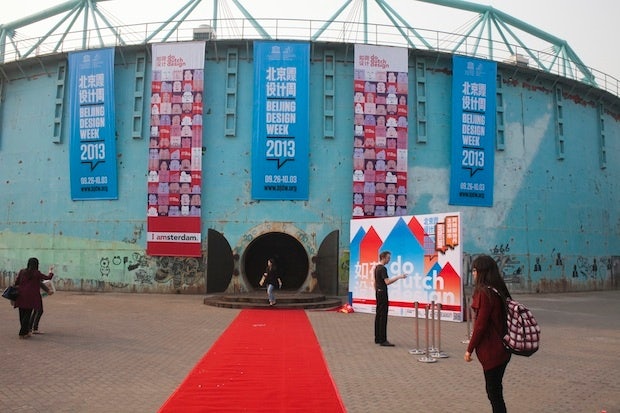
The Amsterdam Guest City section at Beijing Design Week. (Beijing Design Week)
As in years previous, most events in the fourth edition of Beijing Design Week were concentrated in three areas that are notoriously difficult to navigate for the uninitiated: the twisting, ancient alleyways of Dashilar, behind Tiananmen Square; the spacious, open complex of 751 D-Park, an old industrial site that borders the 798 Art District, and Caochangdi, a small, far-flung village that is home to a handful of major art galleries just north of the city’s fifth ring road. Add to that a keynote “Smart City” exhibition at the China Millennium Monument Museum of Digital Arts that featured over 70 designs focused on more environmentally-friendly urban planning, appliances, and smartphone apps, and a number of locations scattered throughout the city that offered their own displays, workshops and lectures, and the week itself incorporated an adequately large number of events for the design aficionado to revel in. That is, if they could figure out where anything was.
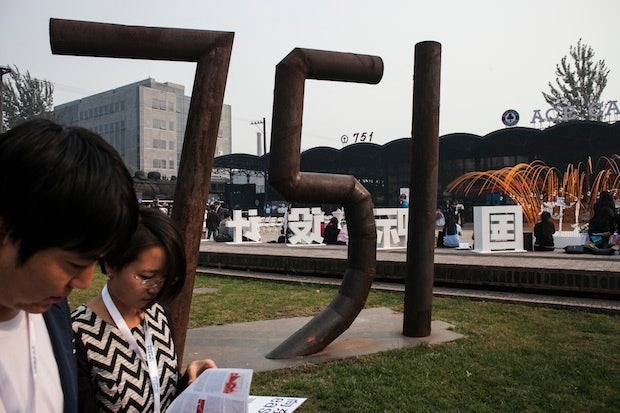
The entrance to 751 D-Park at Beijing Design Week. (Beijing Design Week)
As could be expected from such organization, this year’s Beijing Design Week was hit and miss. Some highlights in Caochangdi included “The Beautiful Future,” a display of North Korean art commissioned by North Korean travel company Koryo Tours director Nick Bonner and t-shirt company Plastered 8 founder Dominic Johnson-Hill, which depicted the masses in Mao-era suits joyously invading modern day Beijing offices, swarming the city streets and surrounding iconic buildings. “Carving the Unconscious” an exhibition of darkly disturbing large-scale linocuts of people caught in nightmare scenarios, and smaller linocuts of simple scenes covered with Chinese characters from artist Chen Haiyan was the most technically proficient show on display in Caochangdi. A photo setup from RAWR 3D Design Center that transferred pictures taken of a participant to a large screen where they were then rendered in 3D animation was an amusing party trick that entertained a small crowd sipping on fresh-brewed gourmet coffee from the Trader Zhou stall next door.
Swarovski’s “Digital Crystal” exhibition, a display of works from a roster of international architects, designers and artists who used both physical crystals and the geometrical shape of crystals to create individual projects—for example shining lasers at a suspended crystal in such a way as to create a laser light image of a crystal surrounding the physical one,—was by far the most innovative display in 751 D-Park. Food Loop, an open-air organic kitchen surrounded by hydroponic plants, sat on top of an open-air pedestrian bridge, offered a visual contradiction between the green plants and the surrounding factory spaces that was an effective reminder of how badly Beijing needs such environmentally friendly ideas. The “DADA Digital Infiltration” exhibition, held in a large metal tank, was comprised of a series of experimental designs from architecture and design students and submissions to the Digital Architectural Design Competition. Though it took time to read through the descriptions of the projects, it was time well spent, and provided a glimpse into the sensibilities and concerns of a new generation of Chinese architects and designers.
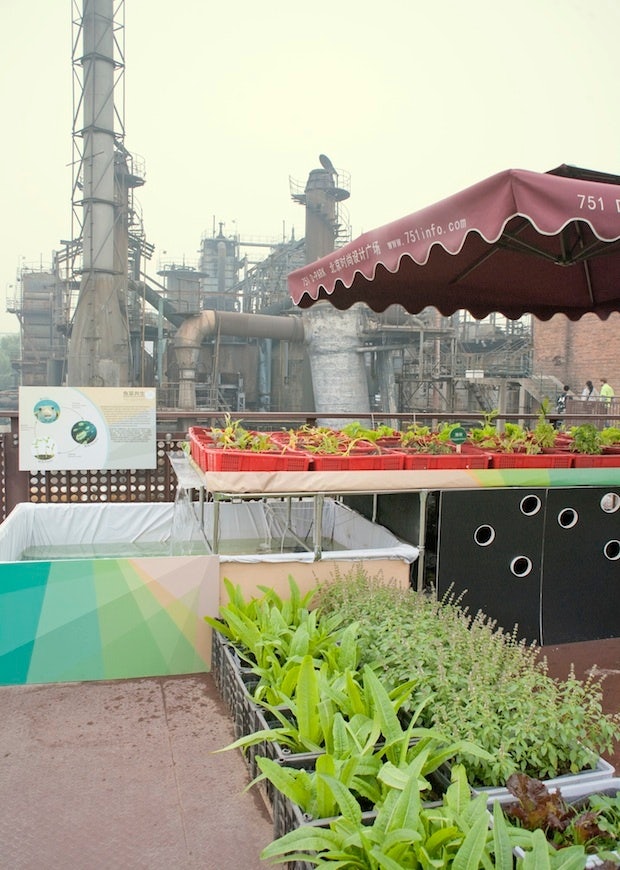
The Food Loop project. (Beijing Design Week)
By far the most fun for an afternoon of wandering was the Dashilar area. Volunteers were on hand to help attendees navigate the winding hutong alleys, and arrows on posters pasted on walls pointed the way towards various displays. Standardarchitecture’s “Micro-Hutong” used windowed boxes set on top of each other to create a layered living space within the narrow confines of a traditional hutong home. It offered a unique use of space in a city where space is often difficult to find. Many of the exhibitions focused on fusing traditional Beijing architecture with elements of modern life, such as an old factory building that served as the main exhibition space. “Milky Wave,” Aidia Studios’ installation of yogurt pots strung on small lights that hung from the ceiling, creating a river of white lights over a staircase in the factory served as a reminder of the endless possibilities for recycling everyday objects, while “Common Objects: Soviet and Chinese Design 1950-1980,” a display comprised of old record players, baskets, irons, telephones and other household appliances, was a fascinating look at how designers of the past thought about form, modernity and necessity.
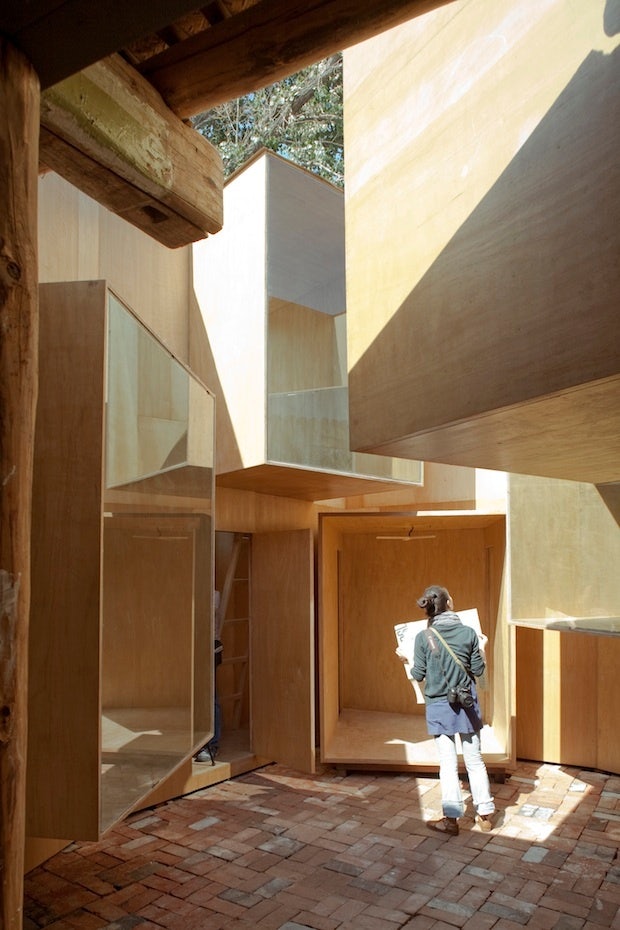
The Micro-Hutong project. (Beijing Design Week)
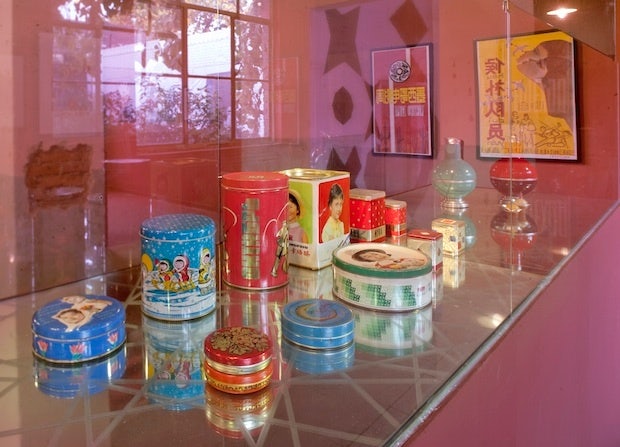
The "Common Objects: Soviet and Chinese Design 1950–1980s" exhibit at Beijing Design Week. (Beijing Design Week)
Despite the organizational issues, Beijing Design Week shows promise. Whether or not that promise will be fully realized in the future remains to be seen.